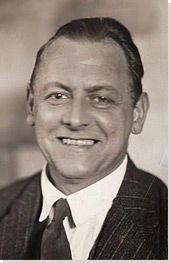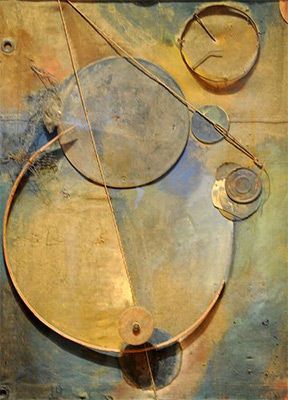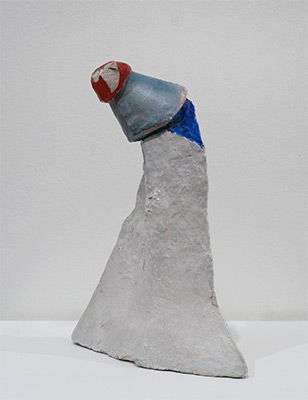Kurt Hermann Eduard Karl Julius Schwitters (20 June 1887 – 8 January 1948) was a German artist who was born in Hanover, Germany.
Schwitters worked in several genres and media,

including dadaism, constructivism, surrealism, poetry, sound, painting, sculpture, graphic design, typography, and what came to be known as installation art. He is most famous for his collages, called Merz Pictures.
After studying art at the Dresden Academy alongside Otto Dix and George Grosz, (although Schwitters seems to have been unaware of their work, or indeed of contemporary Dresden artists Die Brücke[4]), 1909–1915, Schwitters returned to Hanover and started his artistic career as a post-impressionist. In 1911 he took part in his first exhibition, in Hanover. As the First World War progressed his work became darker, gradually developing a distinctive expressionist tone
Directly affected by the depressed state of Germany following World War I, and the modernist ethos of the Dada movement, Kurt Schwitters began to collect garbage from the streets and incorporate it directly into his art work. The resulting collages were characterized by their especially harmonious, sentimental arrangements and their incorporation of printed media. He actively produced artistic journals, illustrated works, and advertisements, as well as founding his own Merz journal. He wrote poems and musical works that played with letters, lacing them together in unusual combinations, as he’d done in the collages, in the hope of encouraging his audience to find their own meanings. His multiple avant-garde efforts culminated in his large merzbau creations. These works, collaborations with other avant-garde artists, would start with one object to which others were added, causing the whole piece to change and evolve over time, growing to great proportions that forced the viewer to actually experience, rather than simply view, the art.
Important Art by Kurt Schwitters
1-Revolving (1919)

Artwork description & Analysis: This work demonstrates a significant shift in Schwitters’ early artistic practice from primarily conservative figurative painting to abstract collage. After World War I, Schwitters began to collect broken and discarded materials he found on the streets and arrange them into works of art. Born from the rubble left by the war, these works emphasize the fact that art can be made from destruction; that urban detritus could be made into something beautiful. In Revolving, found items are organized to form lines and shapes to which he adds bits of yellow and blue paint for shading.
2-(The Clown) (c. 1945-7)

Artwork description & Analysis: Fashioned from plaster and found objects, this diminutive assemblage is characteristic of the mixed media sculptures Schwitters produced toward the end of his life, while exiled in England. Despite its unassuming stature and materials, this sculpture embodies the enduring tenderness and whimsy unique to the artist’s oeuvre.
my favorite art pieces of his:




I really enjoy looking at Kurt’s art as it has a lot of texture, color, and meaning to it. I also like the fact that he uses anything like garbage scraps and scraps left from the after war to create his master pieces.

Identity : concept = explore cultural identity and heritage
context = split life between 2 different cultures and communities
Collect family photos eg passport photos / school photos of mother, father, grandparents + siblings
From these you can create hybrid images that explore the connection to your family geographically too
Artists : look at John Stezaker and Joachim Schmid and use once you have the original images (digital) including portraits of yourself you can create double exposures and photomontages to move your idea forward